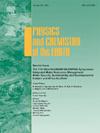综合天气特征信息的区域短期降水定量预报修订技术研究
IF 3
3区 地球科学
Q2 GEOSCIENCES, MULTIDISCIPLINARY
引用次数: 0
摘要
本文提出了一种将天气系统信息纳入随机森林(RF)回归模型以提高强降水预报精度的方法。该方法基于欧洲中期天气预报中心(ECMWF)模式的气象要素,利用降维技术将四维训练数据集转换为三维数据集。将500 hPa槽线和850 hPa- 925hpa切变线等关键天气系统作为预测因子引入RF模式。最后,利用中国气象局上海3公里区域模式和预报员经验对强降水预报进行校正。RF模式在预测降水事件方面优于ECMWF模式,尤其在预测暴雨及以上降水方面表现出色。从2022年4月到9月,RF模型对暴雨和更强降水事件的正确预测提高了18%,同时在各种暴雨强度下的TS评分也明显提高。此外,RF模型提供了更准确的降水下降面积和强度的表示,与实际降雨模式密切一致。当模型中预测的雨带形状和趋势与实际观测相一致时,这种精度的提高尤为明显,通常会导致预测的降雨强度略强。这些结果表明,将天气系统特征整合到RF模式中显著提高了对暴雨和更强降水事件的预测精度。这一进展为气象应用提供了更有效和可靠的工具,特别是在预测强降雨情景方面。本文章由计算机程序翻译,如有差异,请以英文原文为准。
Research on regional short-term precipitation quantitative forecast revision technology integrating weather feature information
This study proposes a method to improve the accuracy of heavy precipitation forecasts by incorporating weather system information into a random forest (RF) regression model. Based on meteorological elements from the European Centre for Medium Range Weather Forecasts (ECMWF) model, this method utilizes dimensionality reduction techniques to transform the four-dimensional training dataset into a three-dimensional one. Key weather systems, such as the 500 hPa trough line and the 850 hPa-925hPa shear line, are introduced as predictive factors into the RF model. Finally, the method corrects heavy precipitation forecasts using the China Meteorological Administration's Shanghai 3-km regional model and forecaster experience. The RF model demonstrated superior performance over the ECMWF model in predicting precipitation events, particularly excelling in forecasting heavy rain and above. From April to September 2022, the RF model achieved an 18 % increase in correct forecasts for heavy rain and more intense precipitation events, along with notably better TS scores across various intensities of rainstorms. Additionally, the RF model provided a more accurate representation of precipitation fall areas and intensities, closely aligning with actual rainfall patterns. This enhanced accuracy was particularly evident when the predicted rain band shapes and trends in the model corresponded with real-world observations, often resulting in a slightly stronger intensity of the forecasted rain. These findings demonstrate that the integration of weather system features into the RF model significantly improves the accuracy in forecasting heavy rain and more severe precipitation events. This advancement represents a more effective and reliable tool for meteorological applications, especially in predicting intense rainfall scenarios.
求助全文
通过发布文献求助,成功后即可免费获取论文全文。
去求助
来源期刊

Physics and Chemistry of the Earth
地学-地球科学综合
CiteScore
5.40
自引率
2.70%
发文量
176
审稿时长
31.6 weeks
期刊介绍:
Physics and Chemistry of the Earth is an international interdisciplinary journal for the rapid publication of collections of refereed communications in separate thematic issues, either stemming from scientific meetings, or, especially compiled for the occasion. There is no restriction on the length of articles published in the journal. Physics and Chemistry of the Earth incorporates the separate Parts A, B and C which existed until the end of 2001.
Please note: the Editors are unable to consider submissions that are not invited or linked to a thematic issue. Please do not submit unsolicited papers.
The journal covers the following subject areas:
-Solid Earth and Geodesy:
(geology, geochemistry, tectonophysics, seismology, volcanology, palaeomagnetism and rock magnetism, electromagnetism and potential fields, marine and environmental geosciences as well as geodesy).
-Hydrology, Oceans and Atmosphere:
(hydrology and water resources research, engineering and management, oceanography and oceanic chemistry, shelf, sea, lake and river sciences, meteorology and atmospheric sciences incl. chemistry as well as climatology and glaciology).
-Solar-Terrestrial and Planetary Science:
(solar, heliospheric and solar-planetary sciences, geology, geophysics and atmospheric sciences of planets, satellites and small bodies as well as cosmochemistry and exobiology).
 求助内容:
求助内容: 应助结果提醒方式:
应助结果提醒方式:


